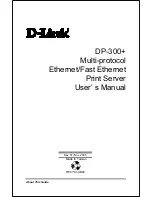
The
eight-digit
codes
are
as
follows:
Code
Action
A1FD
0000
System
firmware
has
been
corrupted
and
must
be
reflashed.
A1FD
0001
Insert
update
diskette
1.
A1FD
0002
Insert
update
diskette
2.
A1FD
0003
Insert
update
diskette
3.
A1FD
000n
Insert
update
diskette
n.
Notes:
1.
If
the
wrong
diskette
is
inserted
at
any
time,
or
if
the
diskette
is
left
in
the
drive
after
it
has
been
read,
B1FD
001F
is
displayed,
indicating
that
the
wrong
diskette
is
in
the
drive.
2.
If
B1FD
001A
is
displayed
at
any
time
during
the
process,
the
service
processor
must
be
reset
by
activating
the
pinhole
reset
switch
on
the
primary
drawer
operator
panel.
After
the
update
process
is
complete,
the
service
processor
resets
itself
and
goes
through
a
complete
reboot.
Configuring
and
Deconfiguring
Processors
or
Memory
All
failures
that
crash
the
system
with
a
machine
check
or
check
stop,
even
if
intermittent,
are
reported
as
a
diagnostic
callout
for
service
repair.
To
prevent
the
recurrence
of
intermittent
problems
and
improve
the
availability
of
the
system
until
a
scheduled
maintenance
window,
processors
and
memory
DIMMs
with
a
failure
history
are
marked
″
bad
″
to
prevent
their
being
configured
on
subsequent
boots.
A
processor
or
memory
DIMM
is
marked
″
bad
″
under
the
following
circumstances:
v
A
processor
or
memory
DIMM
fails
built-in
self-test
(BIST)
or
power-on
self-test
(POST)
during
boot
(as
determined
by
the
service
processor).
v
A
processor
or
memory
DIMM
causes
a
machine
check
or
check
stop
during
run
time,
and
the
failure
can
be
isolated
specifically
to
that
processor
or
memory
DIMM
(as
determined
by
the
processor
run-time
diagnostics
in
the
service
processor).
v
A
processor
or
memory
DIMM
reaches
a
threshold
of
recovered
failures
that
results
in
a
predictive
callout
(as
determined
by
the
processor
run-time
diagnostics
in
the
service
processor).
During
boot
time,
the
service
processor
does
not
configure
processors
or
memory
DIMMs
that
are
marked
″
bad.
″
If
a
processor
or
memory
DIMM
is
deconfigured,
the
processor
or
memory
DIMM
remains
offline
for
subsequent
reboots
until
it
is
replaced
or
Repeat
Gard
is
disabled.
The
Repeat
Gard
function
also
allows
users
to
manually
deconfigure
a
processor
or
memory
DIMM,
or
re-enable
a
previously
deconfigured
processor
or
memory
DIMM.
For
information
on
configuring
or
deconfiguring
a
processor,
see
the
Processor
Configuration/Deconfiguration
Menu
on
page
383.
For
information
on
configuring
or
Chapter
7.
Using
the
Service
Processor
403
Summary of Contents for 6H0
Page 2: ......
Page 12: ...x Service Guide ...
Page 16: ...xiv Service Guide ...
Page 18: ...xvi Service Guide ...
Page 28: ...R CEC Drawer 5 EIA Units Primary I O Drawer 5 EIA Units 8 Service Guide ...
Page 29: ...CEC Drawer Front View 1 1 Power On LED Chapter 1 Reference Information 9 ...
Page 33: ...5 Fan 4 U0 1 F4 6 Fan 3 U0 1 F3 Chapter 1 Reference Information 13 ...
Page 37: ...5 Fan 4 U0 2 F4 6 Fan 3 U0 2 F3 Chapter 1 Reference Information 17 ...
Page 77: ...DC Power Cable Routings Chapter 1 Reference Information 57 ...
Page 88: ...68 Service Guide ...
Page 94: ...74 Service Guide ...
Page 182: ...162 Service Guide ...
Page 444: ...424 Service Guide ...
Page 468: ...Replacement Replace in reverse order 448 Service Guide ...
Page 489: ...Chapter 10 Parts Information This chapter contains parts information for the system 469 ...
Page 490: ...CEC Drawer 1 2 3 4 9 10 12 11 7 8 6 5 14 14 13 15 16 17 18 18 19 20 470 Service Guide ...
Page 493: ...1 2 3 4 5 6 7 8 9 10 11 Chapter 10 Parts Information 473 ...
Page 497: ...7 8 9 10 6 1 2 3 4 4 5 Chapter 10 Parts Information 477 ...
Page 510: ...490 Service Guide ...
Page 522: ...502 Service Guide ...
Page 546: ...526 Service Guide ...
Page 552: ...532 Service Guide ...
Page 559: ......
















































